SME's JOURNEY TOWARDS INDUSTRY 4.0
1. End Goal Each company can start with improvement of its production processes with appropriate operational technologies and lean management concept. From mechanisation to automation and later towards digitalisation, a company must decide what would be its end goal before finding out the technological options available for use. More often companies would need to be convinced or test run solutions before they can run with its full implementation. 2. Lean Manufacturing
Companies is recommended to used lean principles and tools to reduce operational complexity and improve productivity. The lean approach provides the foundation for operational excellence by standardizing processes, instilling a culture of continuous improvement, reduce waste and empowering workers on the shop floor. 3. Digitization & Digitalisation
Digitizing data is an essential prerequisite towards ensuring a smooth digital transformation in Industry 4.0. The process does come with its advantages for companies such as better follow-up of documents, simplified access to content, easier and quicker sharing of documents, reduced search time thanks to a more accurate classification of data, reduced printing costs, increased space (23,000 pages fit in a compact hard drive) and reinforced security for storage and exchanges. Example: currently a company is using traditional method to collect all production data. Every hour the operator will inspect the machine and manually record the machine/production data such as machine state, temperature, vibration, pressure, voltage and of course date and time in paper-based form.
The company can start with transferring the paper-based form into computer-based system such as spreadsheet to do analysis. However, it still requires operator to do data collection, either by manually scanned using measurement tool or download the data from machine.
Next step is to automatically do the data collection by installing a sensor that collects the required data. It is known as the Industrial Internet of Things (IIoT). The sensor can be installed at the a location without interfering the production process. It will collect the parameter automatically without human intervention. Some connectivity is needed here otherwise the sensor will act as data logger. Wi-Fi is the reliable technology to be used where the data collected can be directly transferred to in-house data centre/warehouse. This will ensure no human intervention dan real-time data collection.
When data is collected real-time, the data will keep growing, at a much larger scale. There is a need to find better methods to process and analyse this data, which will likely require infrastructure upgrades. The company may add more capacity to the in-house data warehouse or power up more servers to cater to the rapidly-increasing analytics requirements. But even with the boost of the on-premise systems, the infrastructure eventually may not be able to keep up. This is where the cloud comes in, or more fittingly, when your big data goes to the cloud. Cloud is where the company can store and access data or programs over the internet instead of computer's hard drive. It comes in two basic flavour, public and private, which are the cloud equivalents of the Internet and Intranet. Whether you want to rent a public cloud or store your data at the secure intranet, it is up to the company.
- Visualisation/ descriptive analytics
Begin with the most problematic machine. The analysed data then can be transferred to an electronic dashboard with charts and diagram for better visualisation. Data showed such as overall equipment effectiveness (OEE) which consists of machine availability, machine performance and output, will assist the operation manager to identify problem related to the production. In fact, according to a 2013 study by Aberdeen Group, managers in organisations that use visual data discovery tools are 28 percent more likely to find information that is timely. This is what we called as descriptive analytics or in other word 'what has happened'.
This historical data can be measured against other data to answer the question of 'why something happened'. This is called diagnostic analytics where it involves a possibility to drill down and find out the cause of the problem after the operation manager has identify it.
The next step for the company is to do predictive analytics. It will tell the company, 'what could happen'. Based on the historical data, it uses the findings of descriptive and diagnostic analytics as explain above to detect tendencies, clusters and exceptions, and to predict future trends, which makes it a valuable tool for forecasting.
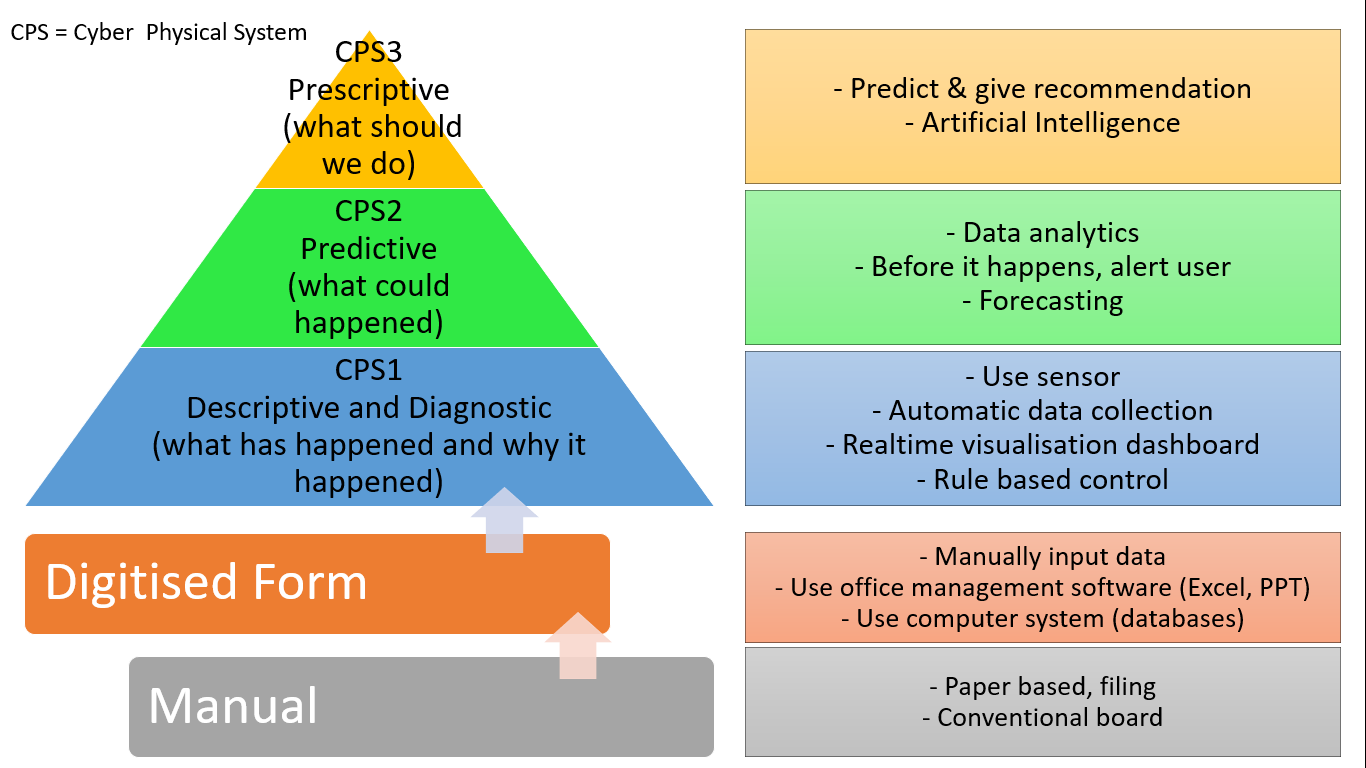 While the company is striving to ensure successful digital transformation, the real winning deal depends on the quality and quantity of the data collected. The more relevant the collected data, the more are chances of gaining actionable insights for operation and business expansion strategies. By integrating IoT and ERP (enterprise resource planning), companies can improve data availability, which can lead to operational excellence. The data accumulated due to IoT sensors will be directly fed to the ERP software. Any changes in the process are reported in real-time. As mentioned above, connected devices can generate a tremendous amount of data. There's a lot you can do with IoT data, but don't tackle it all at once. Instead, start with some basic integrations and shoot for an easy win. Grab the data and software that exists in the company. Rather than trying to port all this data into ERP, it will make more sense to identify specific problems. Integrating IoT and ERP can be a challenge, but it also can be easy. Most ERP systems today have service or interface (Application Programming Interface) that allow for easy passing data between cloud solutions, or from cloud solutions to on-premise ERP systems. This can help make integration much simpler.
In implementing all of those above, don't forget about security. When you are connected, you are vulnerable to cyber-attack. Make sure the connections are safe, solid and secure. Providing solid gated communications between applications is essential for protecting corporate assets. Develop a policy, strategic plan to assess and monitor your system. 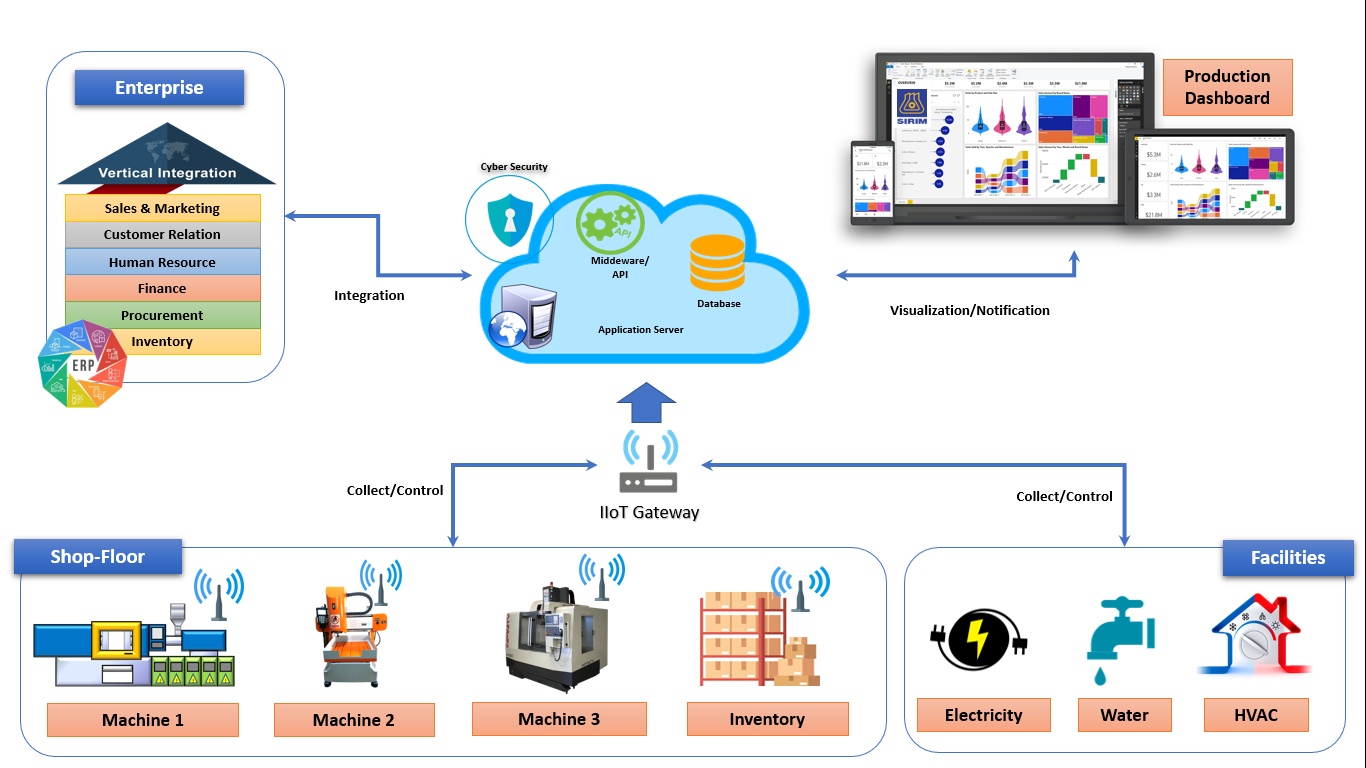
4. How CEO should make decision
Get your employees onboard. Provide training opportunities early on, so they feel equipped well. Create a technology roadmap, action plan. 5. How SIRIM can assist The audit provides the management of the company with
an understanding of their individual strengths and weaknesses as well as
potential points for improvement. The outcome of this audit will help the
participating company to set up action plans to enhance their productivity,
improve their technology management capabilities and move up the value chain.
There are many other interesting aspects of the Technology Audit results,
findings, recommendations and follow-up activities that companies will find
useful in their efforts to become more competitive, innovative and productive. Audit
participants will have the opportunity to work with SIRIM in upgrading their
technology capabilities, exploring potential improvements such as through
mechanisation, automation and upscaling. Participants will also be assessed on
their companies’ readiness to undertake R & D and to identify relevant
areas of R & D that will benefit the company in the long term.
The readiness criteria model consists of three interconnected layers of rings with three shift factors (the core ring). Each shift factor is then divided into thrust (the middle ring) and each thrust is subsequently divided into dimensions (the third outermost ring). The structure of interconnected shift factors, thrusts and dimensions is visualised in the model below:
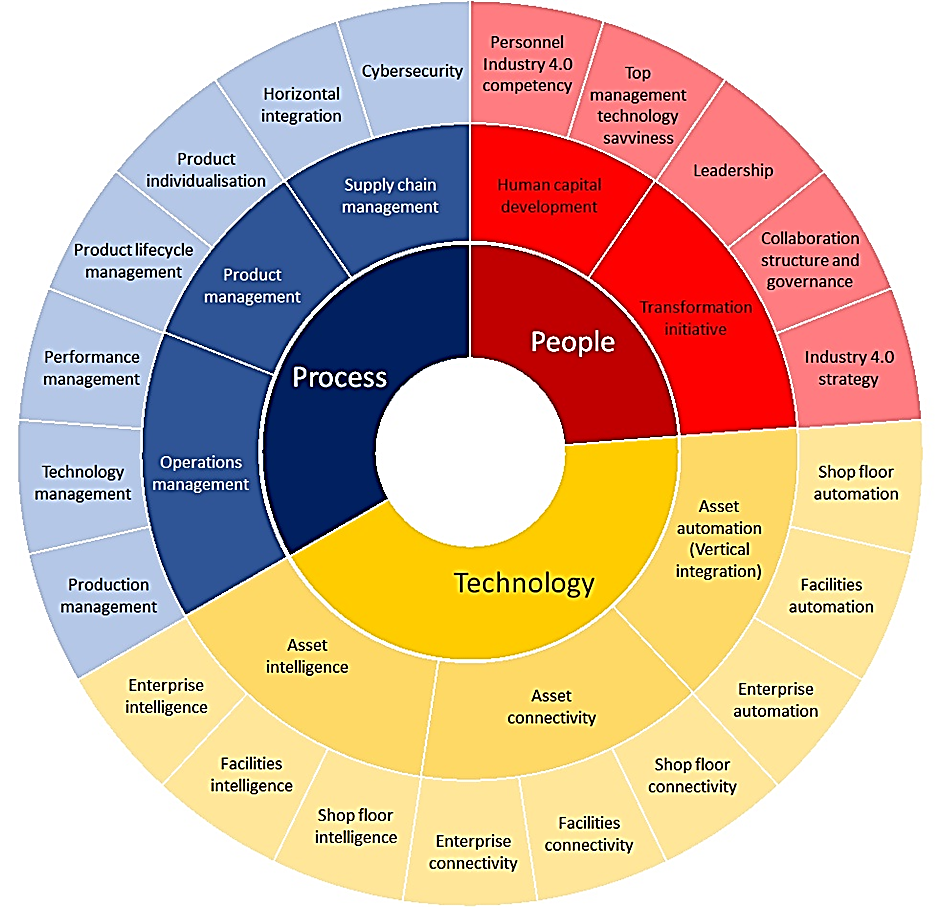
- How SIRIM can help SMEs in manufacturing industry to adopt and implement Industry 4.0?
SIRIM has an initiative to transform Malaysian manufacturing SMEs towards Industry 4.0 through its Centre of Excellence (CoE) on Smart Manufacturing. Based on a collaborative model, the operations of the CoE on Smart Manufacturing integrate existing expertise in SIRIM Berhad and Malaysia in particular, and among nations generally to develop the technological solutions needed by the Malaysian manufacturing companies to achieve the goals and targets under the Industry4WRD policy. 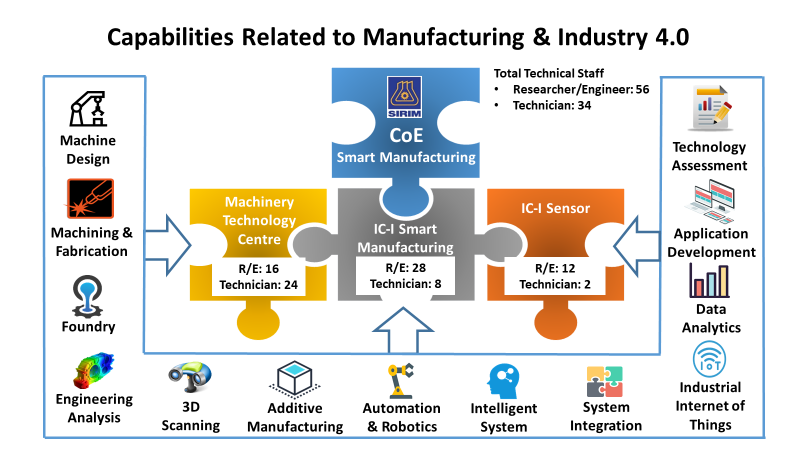
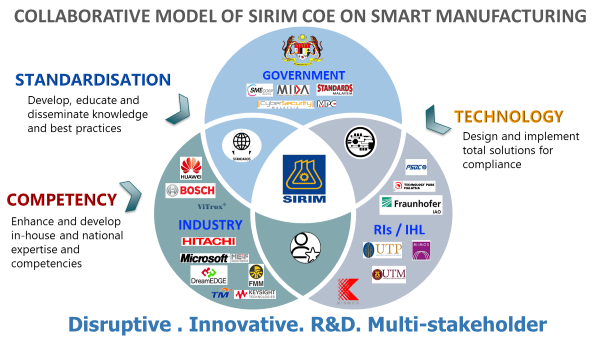
- In order to achieve these goals, SIRIM CoE on Smart Manufacturing has roles in the following aspects:
- Standardisation - developing standards, educating communities and industries; disseminate information on best practices on smart manufacturing.
- Talent - training, building and improving national competence in the field of smart manufacturing.
- Technology - design, build and provide total solution for manufacturing companies (brownfield) and the start-up or small businesses (greenfield).
- There are four programmes under this initiative:
- P1 – Routing the Future Readiness – Talent Developmen
- P2 – Standardisation
- P3 – Innovation Accelerators – Greenfield
- P4 – Cyber Physical Progression – Brownfield
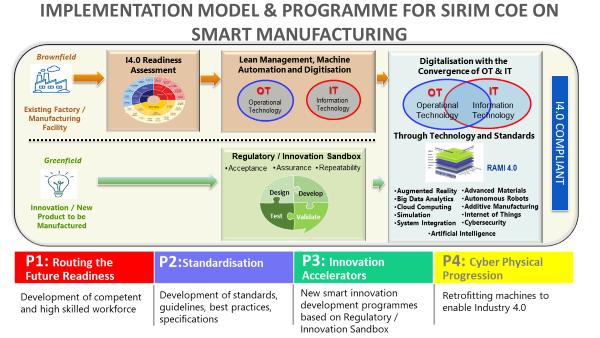
- The implementation approach of the technology intervention for the Malaysian SMEs is divided into 4 steps:
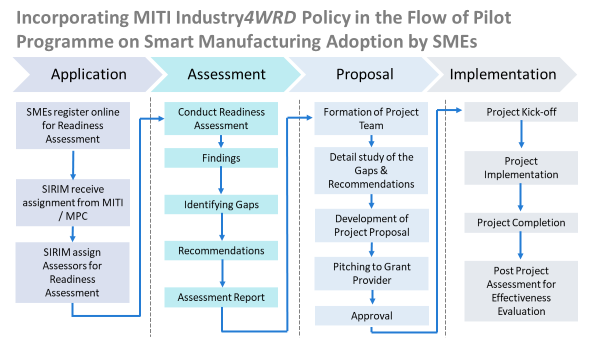
6. Start small win big/ Investment – minimal cost Start small, grab the low-hanging fruits. It is almost impossible to know budget and time in an environment that is new for you and changing rapidly as part of its nature. Therefore, start small and with short projects. A key to observing success is to break things down into small steps and projects, to gain confidence and build on measurable results.
|
